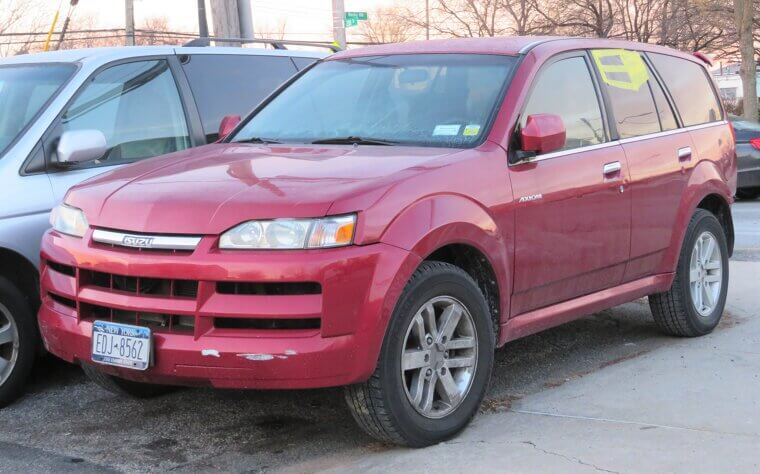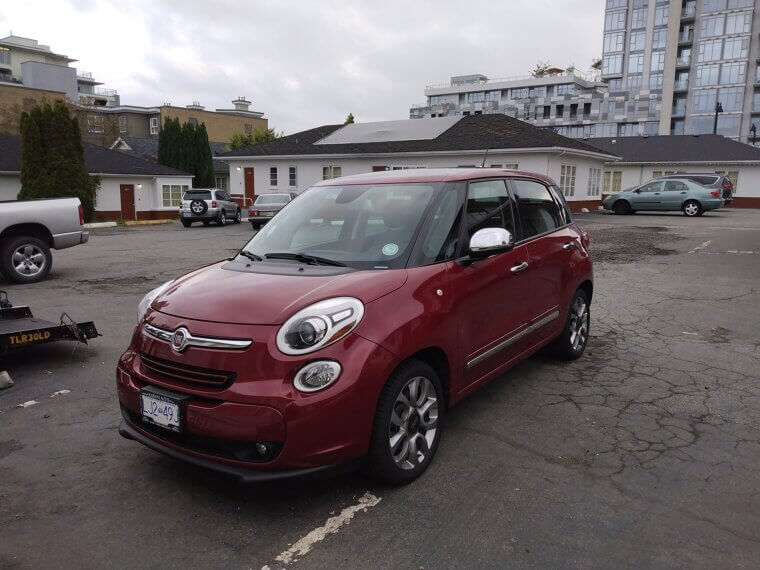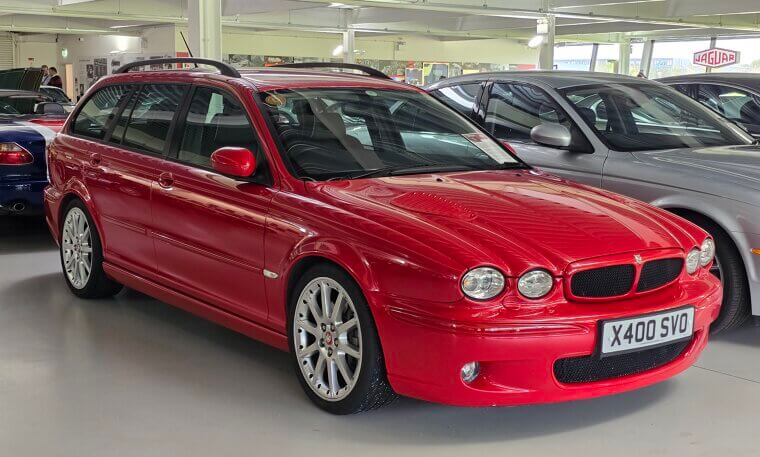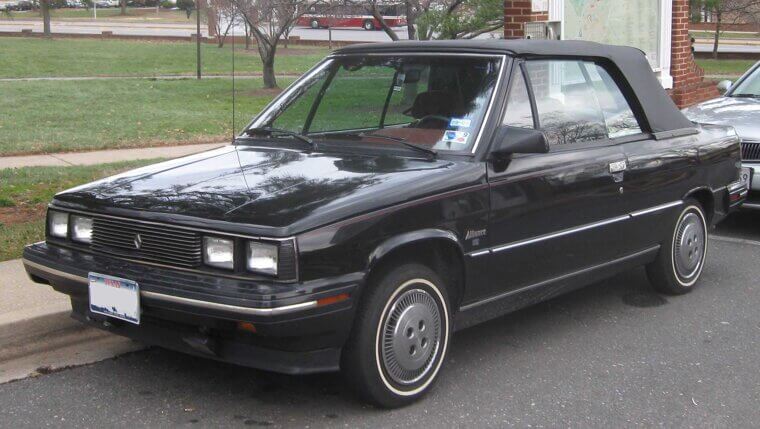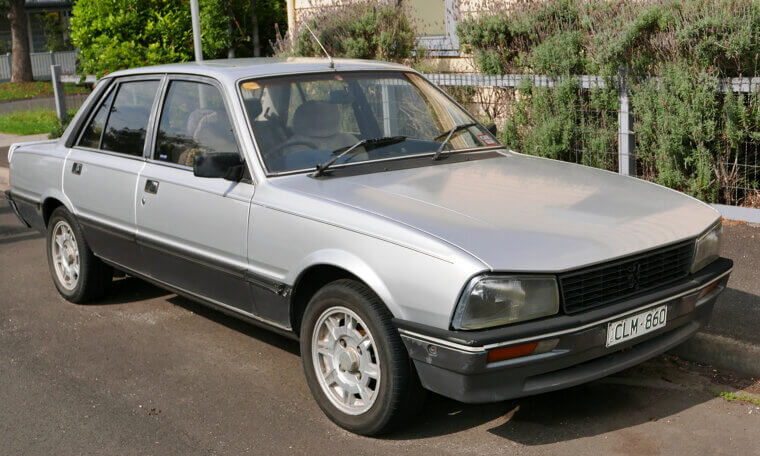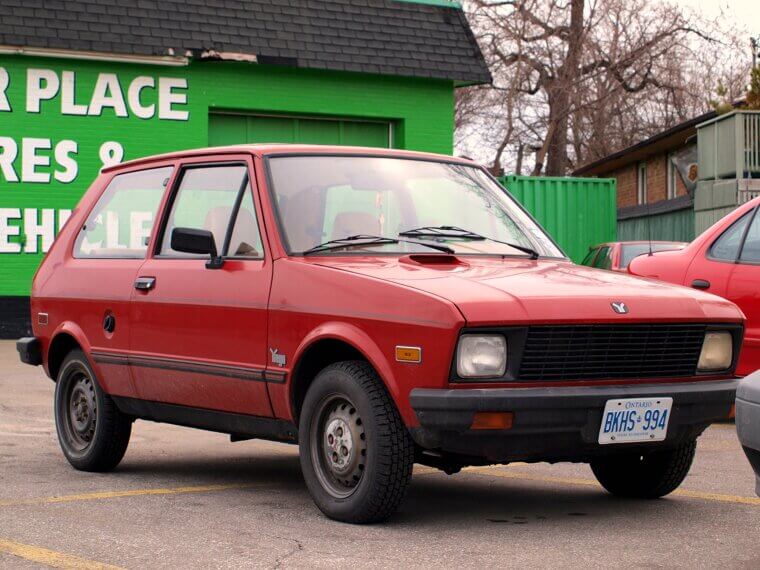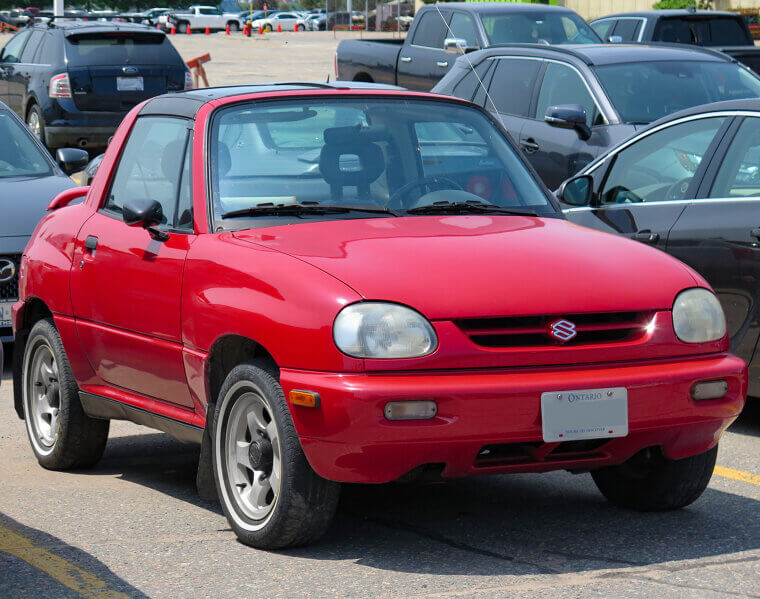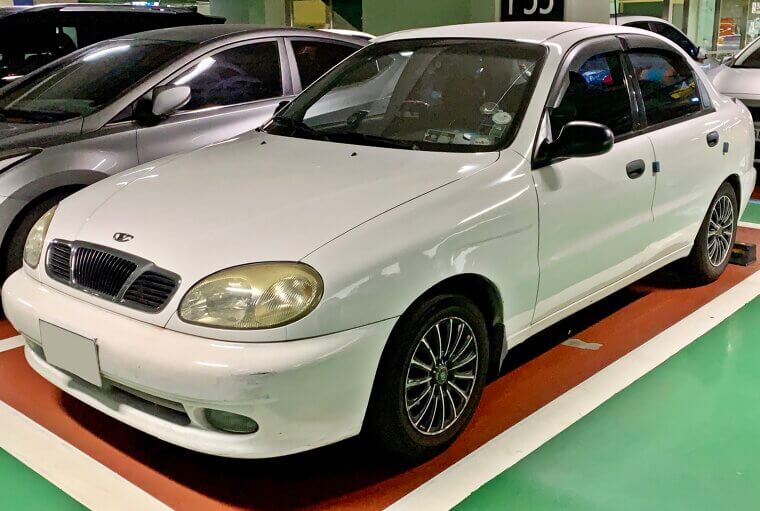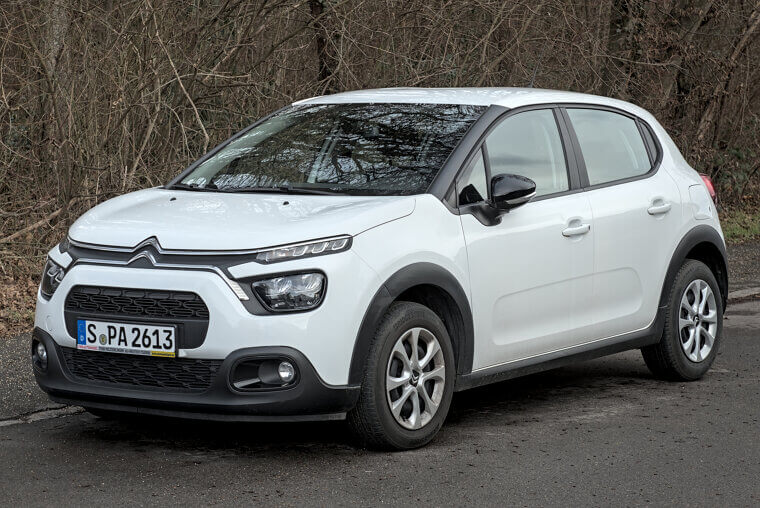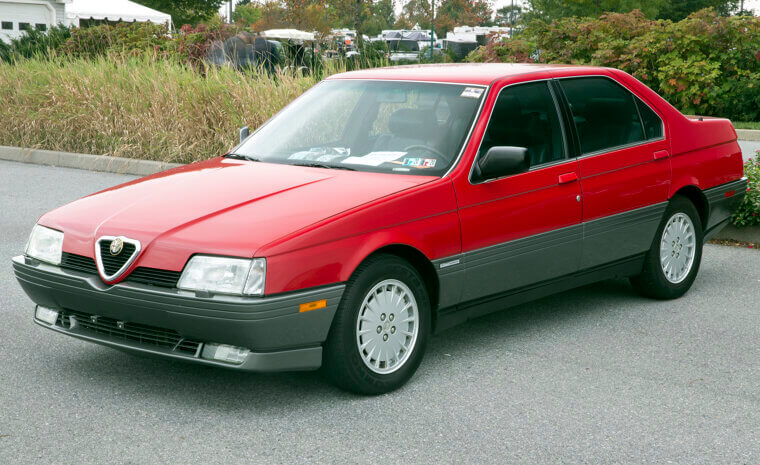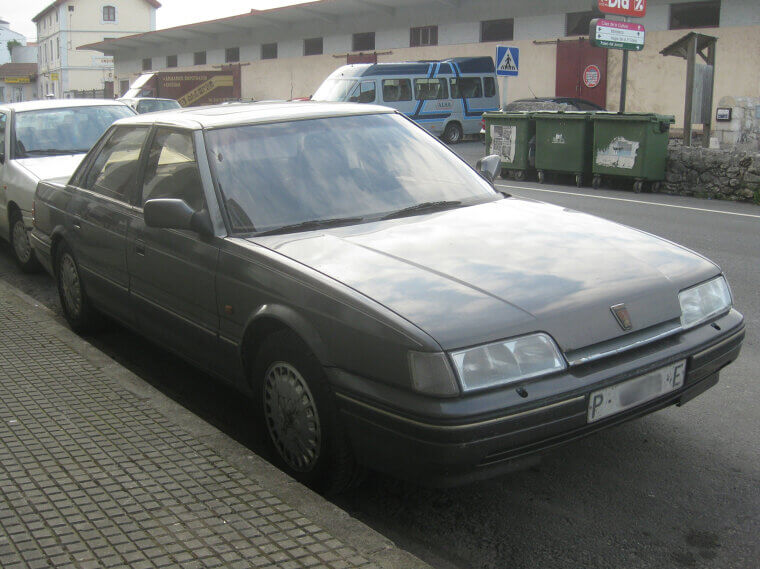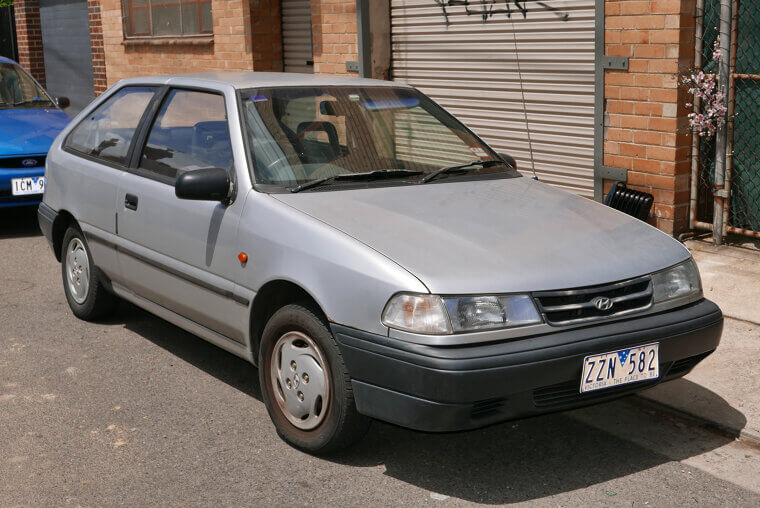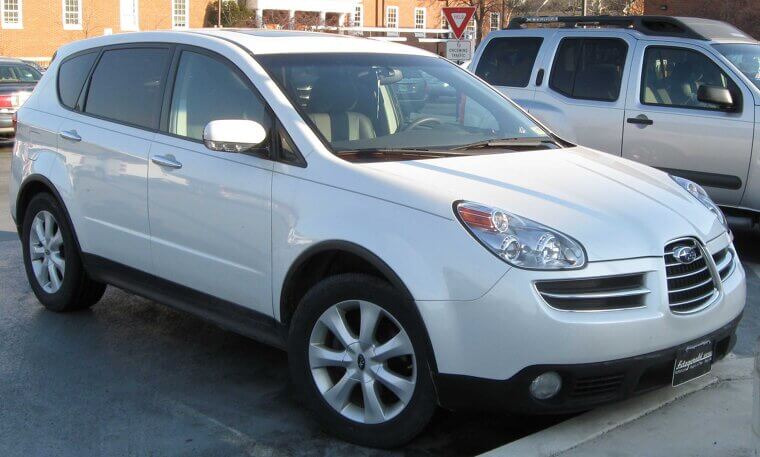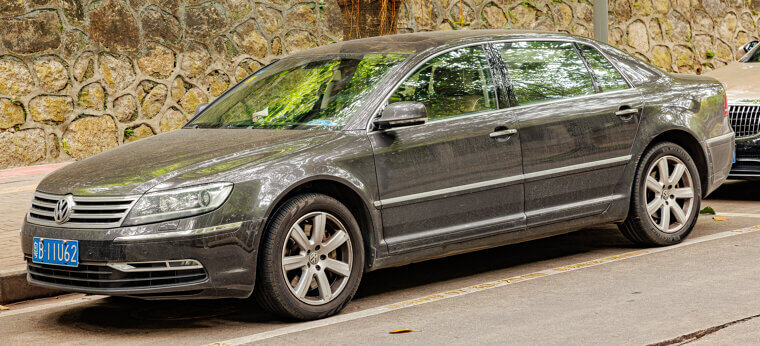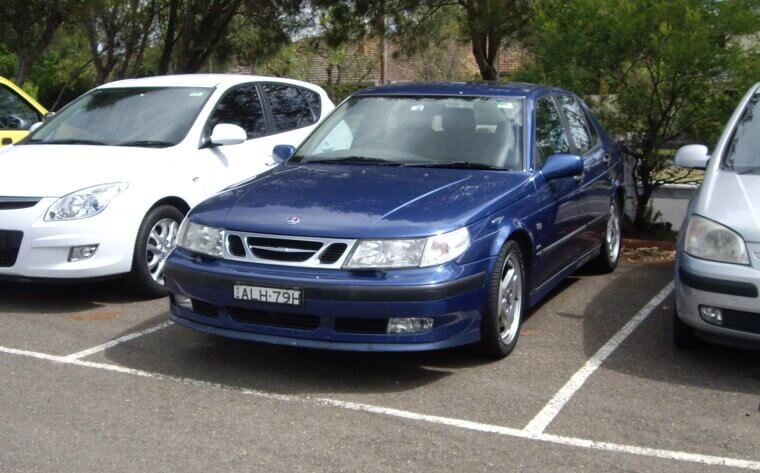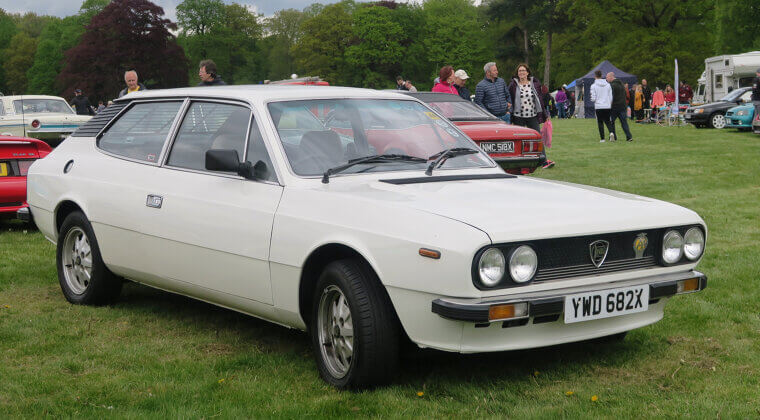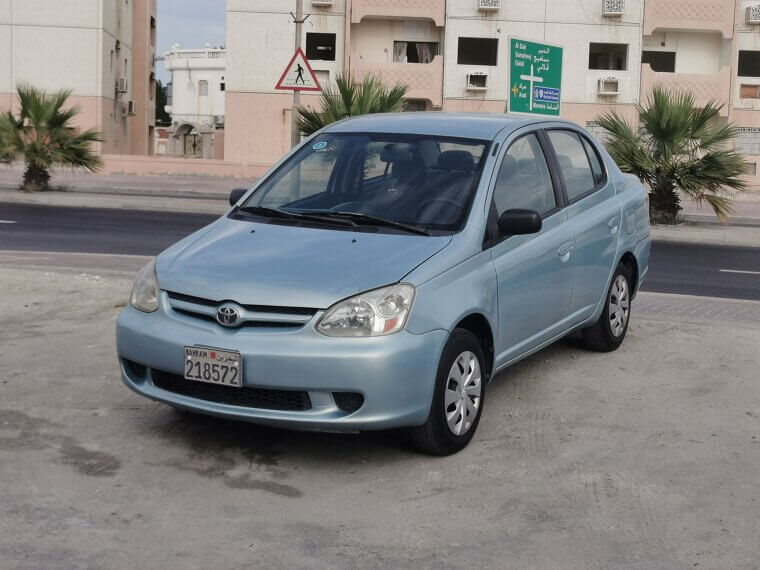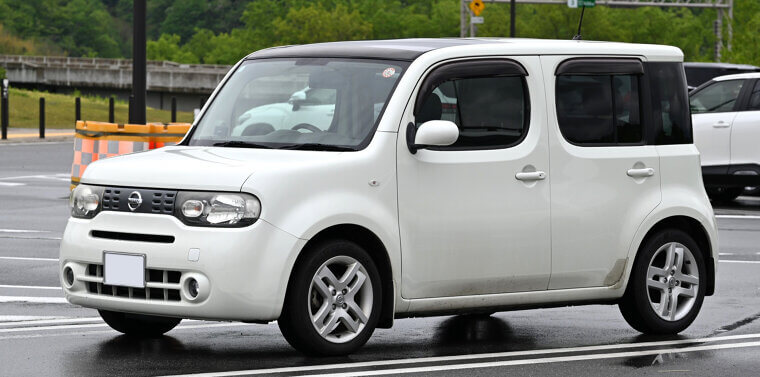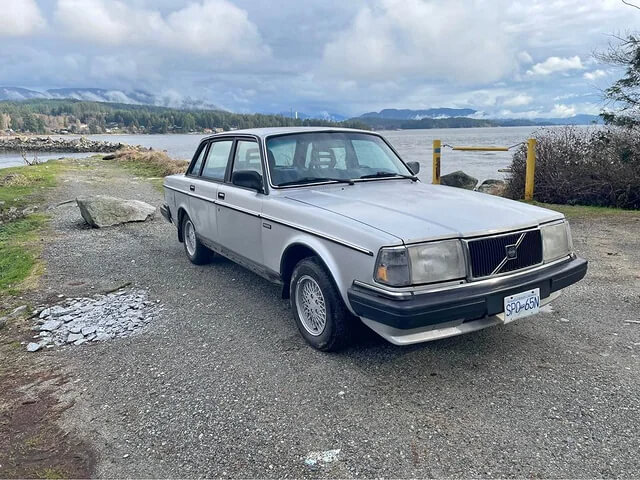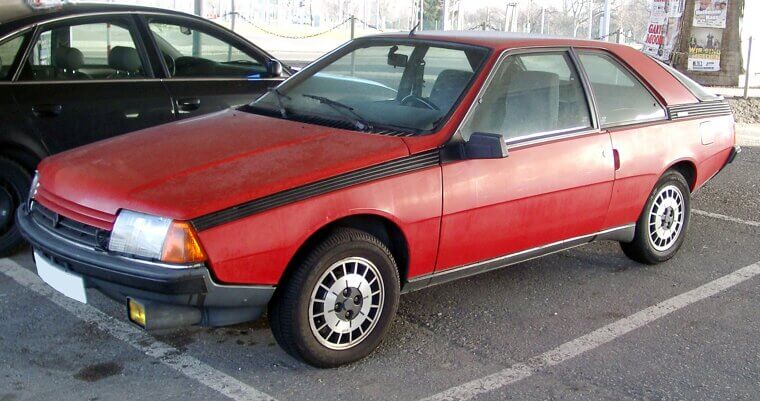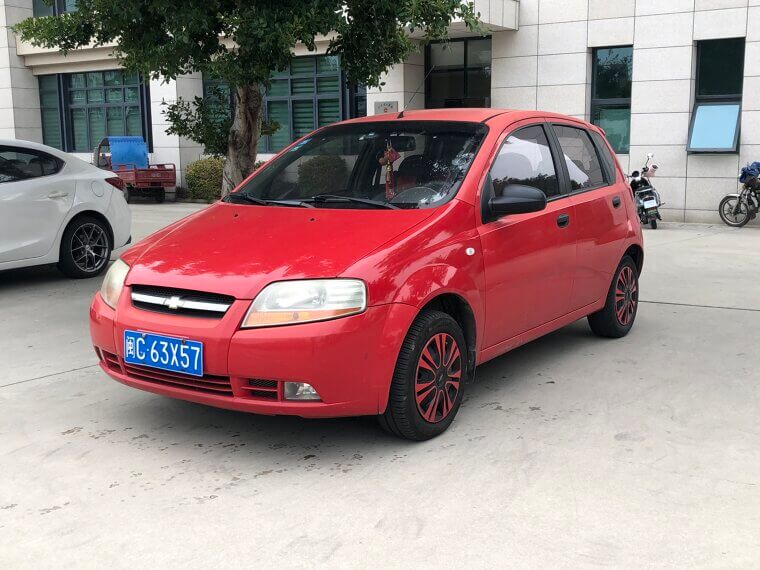Isuzu Axiom
The Isuzu Axiom looked like it came from a sci-fi movie, but its futuristic styling couldn’t hide its dated underpinnings. It was neither sporty nor luxurious, and sales fizzled fast. It’s a reminder that bold design needs substance to back it up, or at least a better suspension.
Fiat 500L
The Fiat 500L was more frustrating than it was stylish; despite the initial belief of Italian sophistication and a family-friendly ideal. However, this Fiat quickly turned dangerous due to its awkward handling, complex infotainment system, and numerous reliability difficulties. Customers received a Leon with a sunroof instead of the Dolce Vita they expected.
Jaguar X-Type
This is an entry-level luxury sedan that Jaguar tried to create, but it felt more like an upgraded Ford Mondeo. Even though it had the well-known jumping cat insignia, it didn’t have the lure and status that drivers were looking for.
Renault Alliance
The Alliance was a French-American cross that aimed to merge European aesthetic with U.S. sensibility. Sadly, it acquired the worst aspects of both worlds: poor dependability, uninspired design, and a more punishing rather than enjoyable driving experience. With this, this car slowly disappeared from our streets.
Peugeot 505
Although the Peugeot 505 had a certain Gallic appeal, its limited parts availability and dubious dependability in the US market could not be saved by charm alone. Sure, it looked good and rode well, but owners were left stranded with a repair bill and a shrug when things broke, which happened more often than not!
Yugo GV
The Yugo GV is the poster child for automotive misfires. Imported from Yugoslavia with a price tag that screamed “bargain,” it quickly earned a reputation for falling apart faster than you could say “starter motor.” It’s now a cult classic - for all the wrong reasons.
Mitsubishi Mirage
The Mirage was meant to be a budget-friendly commuter, but it cut corners in all the wrong places. With a noisy engine, spartan interior, and sluggish acceleration, it felt like a throwback to the ‘90s - minus the enjoyable nostalgia. It’s cheap, yes, but you get what you pay for!
Suzuki X-90
The Suzuki X-90 appeared to be a concept vehicle that was unintentionally put into production. It certainly confused both purchasers and critics because it was part SUV, part coupe. So, this car was a niche that few wanted to be seen in, and no one requested it due to its peculiar styling and limited usefulness.
Daewoo Lanos
The Daewoo Lanos tried to win hearts with affordability, but it lacked the quality and durability to back it up. With bland styling and a reputation for mechanical woes, it quickly became a used car lot regular. Yes, it was cheap to buy—and even cheaper to regret!
Smart ForTwo
The Smart ForTwo was a clever idea on paper: a tiny city car perfect for tight spaces. In reality, it was underpowered, jittery on the highway, and not as fuel-efficient as expected. The For Two turned heads, sure - but mostly in disbelief that anyone paid full price for one.
Citroën C3 Pluriel
The Citroën C3 Pluriel was a convertible, hatchback, and pickup - sort of. Its modular roof system was ambitious but leaky and fiddly. While undeniably quirky, it was also impractical and unreliable. This is the kind of car you admire from afar but wouldn’t want to own on a rainy day.
Alfa Romeo 164
Despite having a lot of the worldwide adored Italian styling, the Alfa Romeo 164's electrical system seemed to be on its own. Before the dashboard lit up like a Christmas tree, the owners adored its appearance. It's an automobile that, largely in terms of anxiety, makes you feel alive.
Rover 800 Series
The Rover 800 Series tried to be a British luxury sedan but ended up feeling more like a rushed group project. With dated styling and a reputation for mechanical hiccups, it struggled to compete. This is the kind of car that made you nostalgic for something else entirely!
Hyundai Excel
Hyundai’s Excel was an early attempt to crack the budget market, and it showed. While it was cheap and cheerful, it also felt flimsy and underpowered. Reliability was hit-or-miss, and resale value was a distant dream.
Subaru B9 Tribeca
Subaru’s B9 Tribeca had a front end that looked like it was always surprised. Inside, it was cramped and awkwardly laid out. While it had Subaru’s trademark all-wheel drive, it lacked the charm and practicality buyers expected. It was a rare misstep from a usually reliable brand.
Volkswagen Phaeton
The VW Phaeton was a luxury car that tried to out-Audi Audi. It was packed with tech and comfort, but few buyers were willing to pay a six-figure price for a Volkswagen. Maintenance costs were sky-high, and resale value plummeted.
Saab 9-5 (post-GM Era)
The Saab 9-5 had quirky charm, but after GM’s involvement, things got messy. Reliability dipped, parts became scarce, and the brand itself vanished. Owners were left with a stylish orphan—fun to drive but hard to fix. It’s a car that deserved better, but got lost in the shuffle.
Lancia Beta
The Lancia Beta was a sporty Italian coupe with a fatal flaw: rust. It rusted so quickly that some owners joked it came pre-corroded. Mechanical issues didn’t help, and its reputation never recovered. It’s a classic case of beauty being only skin-deep, and that skin didn’t last long.
Toyota Echo
The Toyota Echo was reliable, yes—but also forgettable! With its tall, narrow stance and sparse interior, it felt more like an appliance than a car. It got you from A to B, but never with style or comfort.
Nissan Cube
The Nissan Cube was a rolling box of personality, but not everyone appreciated its asymmetrical design and quirky interior. It was practical in theory, but its odd looks and mediocre performance kept it from mainstream success. It’s a car that tried to be different and succeeded a little too well.
Kia Rondo
The Kia Rondo was a compact MPV that did everything adequately—and nothing memorably. It had space, sure, but lacked flair, power, and resale value. It was the automotive equivalent of beige wallpaper: functional, but uninspiring. Buyers moved on quickly, and the Rondo quietly exited stage left.
Mazda RX-8
The RX-8 had a rotary engine that thrilled enthusiasts, until it didn’t. Engine flooding, poor fuel economy, and high maintenance costs made it a headache for daily drivers. It looked great and handled well, but owning one was a gamble.
Volvo 240 Diesel
The Volvo 240 Diesel was built like a tank—and moved like one, too. Its diesel engine was painfully slow, making highway merges a test of patience. While it was durable, it lacked the pep most drivers wanted. It’s a car that taught you the value of momentum—and planning ahead.
Renault Fuego
The Renault Fuego had a name that promised excitement, but the reality was far less fiery. With middling performance and questionable reliability, it never caught on. Its styling was bold, but its execution was bland.
Chevrolet Aveo (Daewoo-Based)
The Chevrolet Aveo was a rebadged Daewoo that felt every bit as budget as its price tag suggested. With cheap materials, sluggish performance, and a forgettable driving experience, it became a rental car staple.

